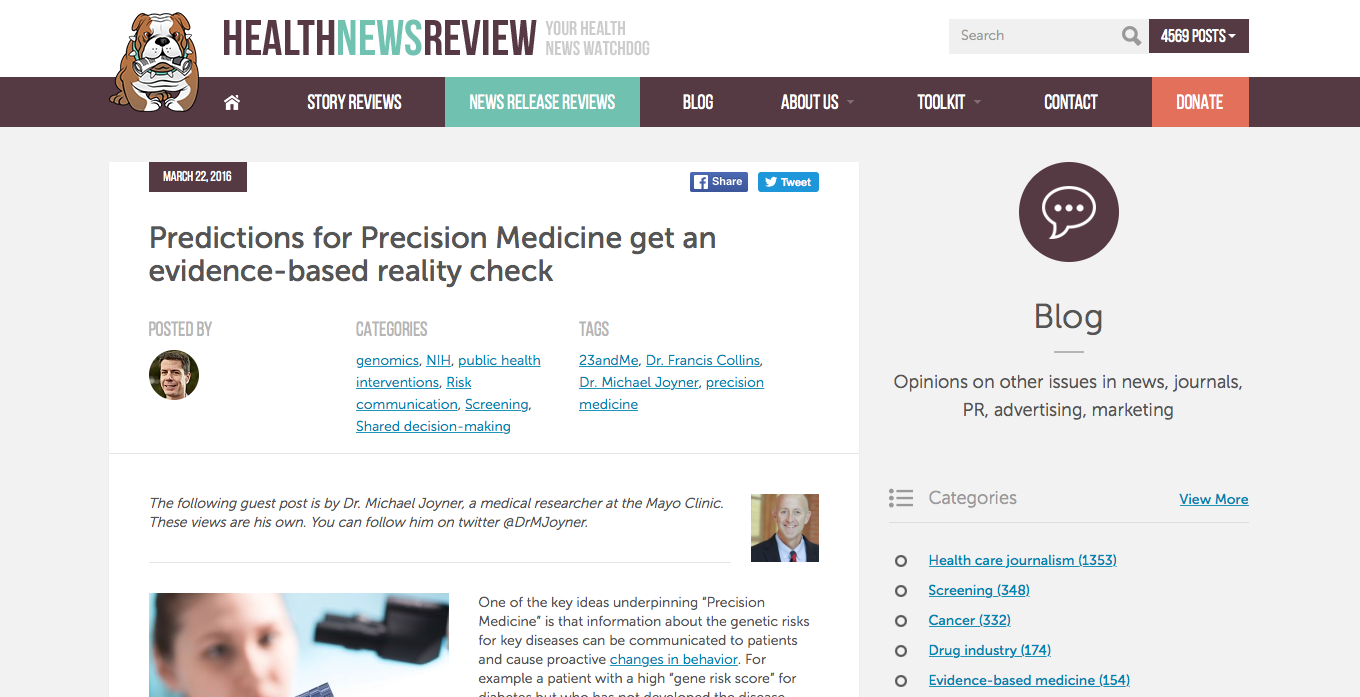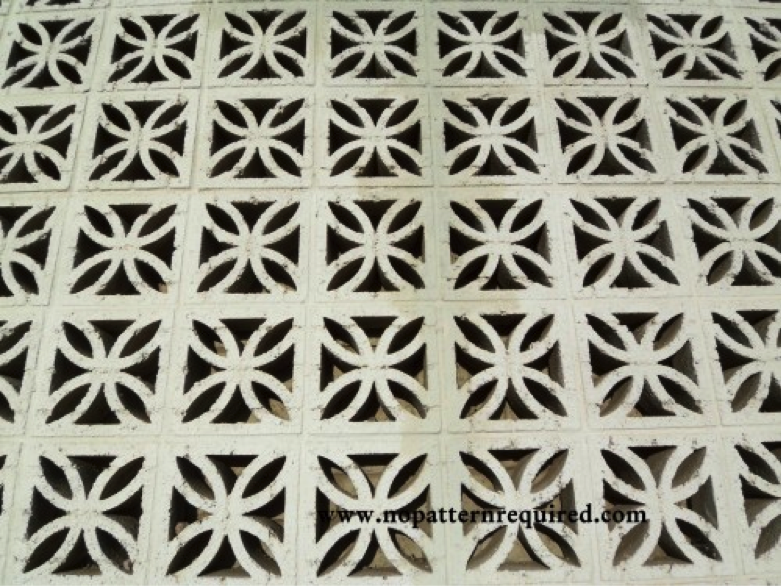Posts Tagged ‘precision medicine’
Precision Medicine & Precision Weather: A False Analogy?
One of the ideas riding the wave of enthusiasm for precision medicine is that with enough big data it should be possible to make increasingly accurate “forecasts” about who gets what disease and how it might be prevented, treated or even “cured”. An analogy to precision weather forecasting and climatology is frequently drawn. Cynicism aside about just how good weather forecasting is and how much it has improved, there are a couple of basic intellectual issues with the comparison that are typically glossed over by advocates of the analogy.
Problem 1: The Nature of the Data
Weather data includes things like continuously monitored surface temperature and wind patterns over essentially most of the world. Some of the data is very granular with high spatial and temporal resolution. Things like pressure measurements, above ground temperatures, below ground temperatures, satellite photos, and information on things like humidity are available. There is also a vast store of historical records dating back 100 or more years in many places. This type of multilevel, highly accurate data with essentially continuous time resolution is simply not available even in the most monitored humans living in the real world even with the best monitors. The accuracy of various wearable devices, the granularity of the data, and the historical information they provide pales in comparison to the available weather related data. As someone who has been making some the most detailed possible measurements of human physiology since the late 1970s, things have been miniaturized and made portable, but the quality of the data has not improved and in many ways has gotten sloppier or at least harder to calibrate.
Problem 2: Predicting What?
The other thing to remember is that with weather prediction the goal is to predict what it is going to be like “outside” in a given place on a given day at a given time. Precision weather forecasting does not tell us anything about the temperature and humidity inside “your house” much less inside a given room inside the house. To make that sort of estimate all sorts of additional information is needed about the size of the house, the surface area exposed to the outside world, the heating and cooling system, how insulated the house is, how good the thermostat is etc., etc, etc… Then there is always the possibility that a window is open or that on a cold day you choose to wear a sweater and reduce the temperature “set-point” on the thermostat. The same issues also apply to a given room the house.
The point here is that for human disease, except perhaps for some elements of dermatology, we are generally interested in what is happening inside a specific room inside the body like the “heart” room, or the “liver” room or the “kidney” room. For things like diabetes or high blood pressure that affect multiple rooms, we are interested in the overall house. Also many diseases of specific rooms also frequently do collateral damage to “the rest of the house”. In many of these diseases the ultimate problem that “brings people to the Dr.” has something to do with a complex feedback control system that has gone haywire. That is certainly the case for diabetes, heart failure, and high blood pressure. In heart failure shortness of breath and exercise intolerance is usually the problem patients complain about vs. a weak heart.
So the weather is an outside condition we are trying to predict based on outside data. Medical conditions are generally inside conditions and predicting them from outside data of questionable quality with limited time resolution and historical tracking is clearly an area where the precision medicine vs. precision weather analogy breaks down. Things like biopsies, images and blood tests are inside samples but they are small snap shots and not the sort of continuous measures available to the weather forecasters
Even if we had perfect monitors it remains to be seen if people will actually use them and if the information gained does anything to change their behavior or make them healthier.
Problem 3: What About Inside-out Prediction?
The flip side of the weather analogy is the idea that if you know enough about the building blocks (the cells for example) that make up the house you can predict what is going on inside the house as a whole. Of course the outside world influences what is happening inside and those who favor an inside-out paradigm tend to ignore or discount that problem. Another issue is that unlike static structures humans can move around and change their behavior depending on the conditions outside. When I lived in Arizona I went outside mostly during the cooler parts of the day. In Minnesota where I now live, most of the year, I go outside during the warmer parts of the day. A cell based approach to modeling what is going on inside the body can miss this key but obvious point.
Then there is the problem of the cells as building materials. Imagine decorative concrete blocks like the ones used in the wall shown below.
Depending on the orientation of such blocks, a wall made from them can have very different properties. Flip them on their side and a solid vs. porous wall “emerges”. Thus, the temperature inside a structure made from such concrete blocks could vary widely depending on their orientation. However, subject the blocks from a wall of any design to chemical analysis and the “basic” properties of the wall are the same. Things of course get even more complicated if you add a heating and cooling system with a thermostat or other design features that influence the temperature in your concrete block building. This sort of inside-out modeling would be less problematic if the DNA in our cells was a better blueprint for what the “whole building”, but it turns out that DNA is a pretty sloppy and much more adaptive blue print than was once thought.
Closing Comment
I would be curious to see just how much better or accurate weather forecasting has gotten over the years. If there is data on this topic perhaps someone will post a source in the comments section. In the meantime, I hope the concepts noted above make you question the precision medicine, precision weather analogy.



